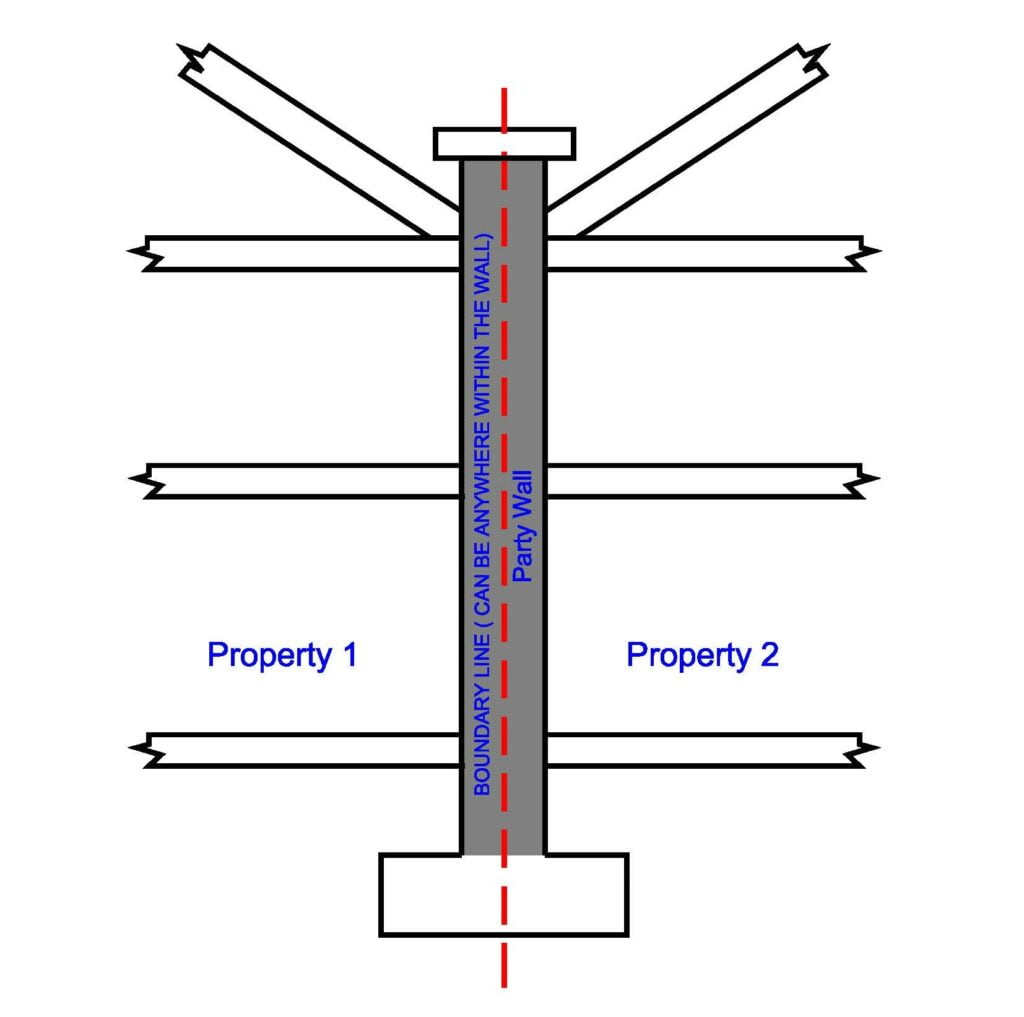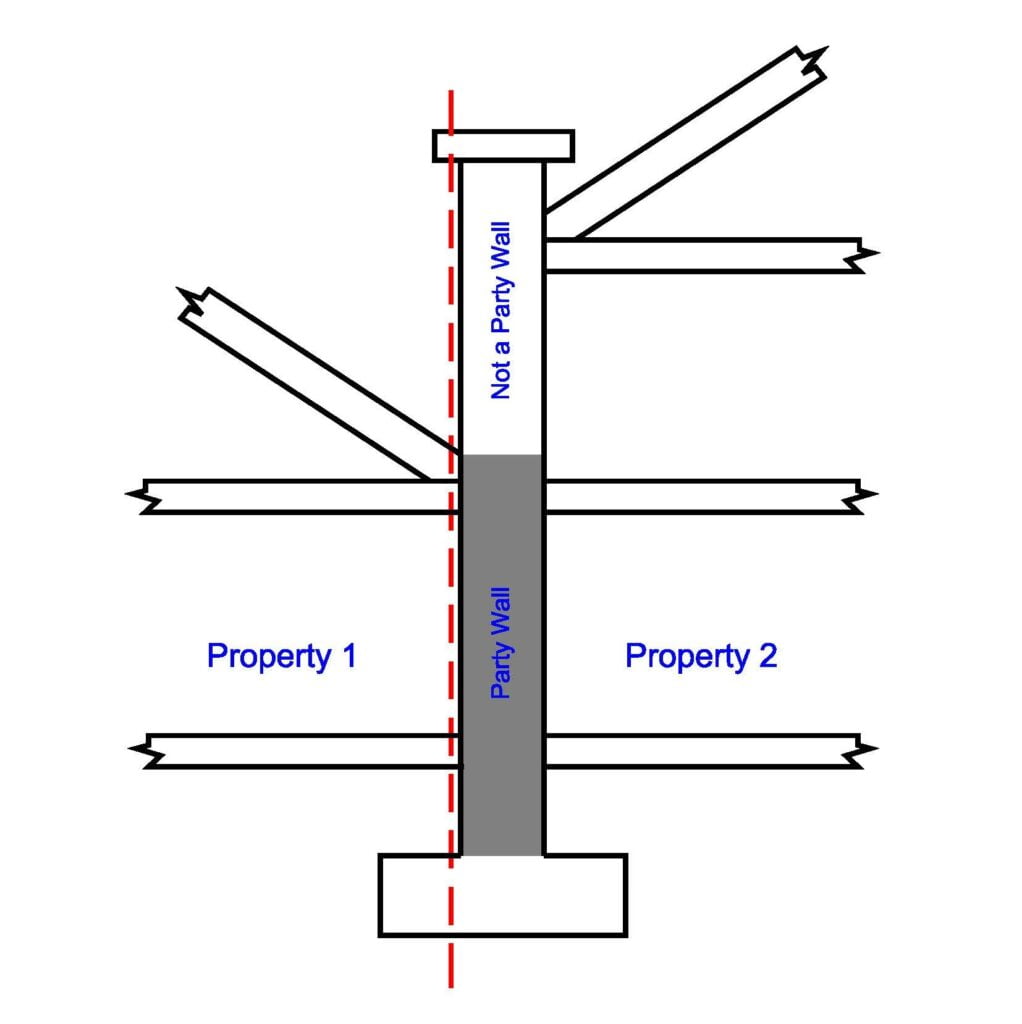
Party Wall Glossary
The language used in the Party Wall Act is hard to understand. This Party Wall Glossary is intended to help with some of the main terms.
Much of the language used in the Party Wall Act is very formal and legalistic, so we have put together this Party Wall Glossary setting out some of the main terms.
The wording of the Party Wall Act can be confusing to the average person trying to understand what their rights and obligations are.
Section 20 of the Act sets out some definitions of the terminology used, which have ‘meanings hereby respectively assigned to them’, whatever that means.
In the interest of Plain English, we’ve had a go at providing a translation :
Party Wall Glossary – Building Owner
The Party Wall Act defines a Building Owner as
‘an owner of land who is desirous of exercising rights under this Act’.
More simply put the Building Owner is the person proposing to carry out works that are covered by the Act. The Building Owner can be a leasehold or freehold owner.
Party Wall Glossary – Adjoining Owner
The term ‘adjoining owner’ and ‘adjoining occupier’ respectively mean :
‘any owner and any occupier of land, buildings, storeys or rooms adjoining those of the building owner’.
The adjoining owner is the neighbour affected by the building owner’s proposed work. The adjoining owner can be either a leasehold or freehold owner.
What is a Building Owner Allowed to do?
Properly followed the Act gives rights to the Building Owner that they wouldn’t otherwise enjoy.
In general terms these include the right to raise, thicken, underpin, cut into or to demolish and totally rebuild party walls, party fence walls and party structures.
The Party Wall Surveyor
The Party Wall Act defines a surveyor as ‘any person not being a party to the matter appointed or selected under section 10 to determine disputes’.
This means that a Building Owner or Adjoining Owner can appoint anyone other than themselves as a ‘surveyor’ to mediate a dispute under the Act, irrespective of their training or experience.
Whilst the Act has no more to say about the suitability of a ‘surveyor’ building works that fall under the auspices of the Act often involve complex excavations and construction.
It should follow that a ‘surveyor’ would be an experienced and regulated chartered building professional. Membership of the Royal Institution of Chartered Surveyors (RICS) or an equivalent regulatory body (CIOB or RIBA) should be a preferred requirement of owners.
The Third Surveyor
The Building Owner’s surveyor and the Adjoining owner’s surveyor appoint the Third Surveyor. The two surveyors call upon the Third Surveyor only when they cannot agree upon a matter.
Party Wall Glossary – What is a Party Wall?
In simple terms a party wall is a wall erected on a property boundary, partly on the land of one owner and partly on the land of another, to provide common support to the structures on both sides of the boundary.
The boundary between ownerships is usually, but not always positioned at the centre of the wall.
The Party Wall etc. Act provides a definition of two different types of party wall :
Party Wall – Type A
‘A wall which forms part of a building and stands on lands of different owners to a greater extent than the projection of any artificially formed support on which the wall rests’.
An example would be a walls that separate terraced or semi-detached houses, such as tose shown in the illustration below.

Party Wall – Type B
This is a little more difficult to understand. The actual wording in the Act is as follows :
‘so much of a wall not being a wall referred to above as separates buildings belonging to different owners’
This usually means a wall that stands wholly on one owner’s land but is used by two or more owners to separate their buildings.
An example would be where a neighbour builds a structure that encloses onto a wall owned by the other neighbour, as in the illustration below :

Only the part of the wall that is enclosed is a party wall.
Party Wall Notice
Under the Party Wall etc Act Notice must be issued to your neighbours if you want to :
– Build on or at the boundary of your two properties
– Work on an existing party wall or party structure
– Excavate below and near to the foundation level of their building or structure
A statutory waiting period of two months starts from the date when the Notice is served.
During this period works cannot start, unless your neighbour agrees to waive this period by mutual consent.
The notice is only valid for a year, so it is also important that it is not served too early. You do not need planning permission for the work before issuing a Party Wall Notice.
We always advise building owners to speak to their neighbours before serving a formal notice. Neighbors who feel they are being consulted and kept informed are much less likely to promptly hire a surveyor when a notice is served.
This can avoid running up a large bill for surveyor’s fees.
See our detailed article on the Party Wall Notice procedure.
Party Wall Dispute
Don’t be discouraged by the term, and don’t worry about potentially offending your neighbors. A dispute in the Party Wall sense of the word is often not much of a dispute at all even if the Act says it is.
Under the Party Wall etc. Act 1996, if an adjoining owner expressly disagrees with the proposed work or does not consent within 14 days of receiving notice then the parties are deemed to be “in dispute”.
Even if a neighbor has no objection to the proposed work, it is often wise to dissent and initiate a ‘dispute’ to ensure that surveyors are appointed to oversee the work and safeguard neighboring properties.
What is a Party Wall Award?
A Party Wall Award is a legal document agreed by the party wall surveyors. An Award is the agreement between the party wall surveyors of the works and how they will be carried out.
The Award should clearly state details of the two properties, their owners and their owners’ addresses.
It should also contain full details of the two surveyors (or agreed surveyor) and the “Third Surveyor”. If you use an “agreed surveyor,” there will be no need for a Third Surveyor.
An Award sets out :
– The work that will be carried out
– When and how the work is to be carried out (to limit times of noisy work for instance)
– Specifies any additional work required (protective measures to prevent damage for instance)
– It usually contains a record of the condition of the adjoining property before the work begins. This is desirable as it can assist in identifying and attributing any damage to adjoining properties for instance.
– Allows access for the surveyor to inspect the works while they are going on as may be necessary, to ensure they are in accordance with the award. A time limit for the commencement of works, usually 12 months
– Who will pay for which part and how much will be paid, including the surveyor’s fees
Party Wall & Neighbourly Matters Services
Boundary Reports & Advice
Development Agreements
Movement & Vibration Monitoring
Neighbourly Liaison
Rights of Way & Easements
Further Guidance when Issuing a Party Wall Notice
We hope this Party Wall Glossary is helpful in providing a translation of many of the formal terms used by Party Wall surveyors.
For information on how the Party Wall Act affects you as a Building Owner, see our Party Wall Fact Sheet.
You can also find further information in our Party Wall FAQs. We have compiled this information from questions we are frequently asked about the Act.
For further information on a range of Party Wall subjects, see our recent articles below :
You can also find guidance on choosing a Party Wall Surveyor in our recent news article.
There is some further information in the government’s explanatory booklet on the Party Wall process.
For more advice on this Party Wall Glossary and how the Act affects your property please give us a call.
If you would rather we called you instead, please fill in our Contact form and we will be in touch.
For a quick online quote for Party Wall advice, send us the details of your project.
Local Party Wall Surveyors
To contact a Party Wall surveyor that’s local to you, see details of our teams in :
For advice direct from one of our Surveyors, please call our Enquiry line on 020 4534 3135.
If you are planning work that is covered by the Act, or if you have received notice of work from a neighbour and want advice on how best to protect your property please contact:
Link: Contact Us
Team members shown:
- Rickie Bloom
- Geoffrey Adams
- Mark Amodio
- Henry Woodley



